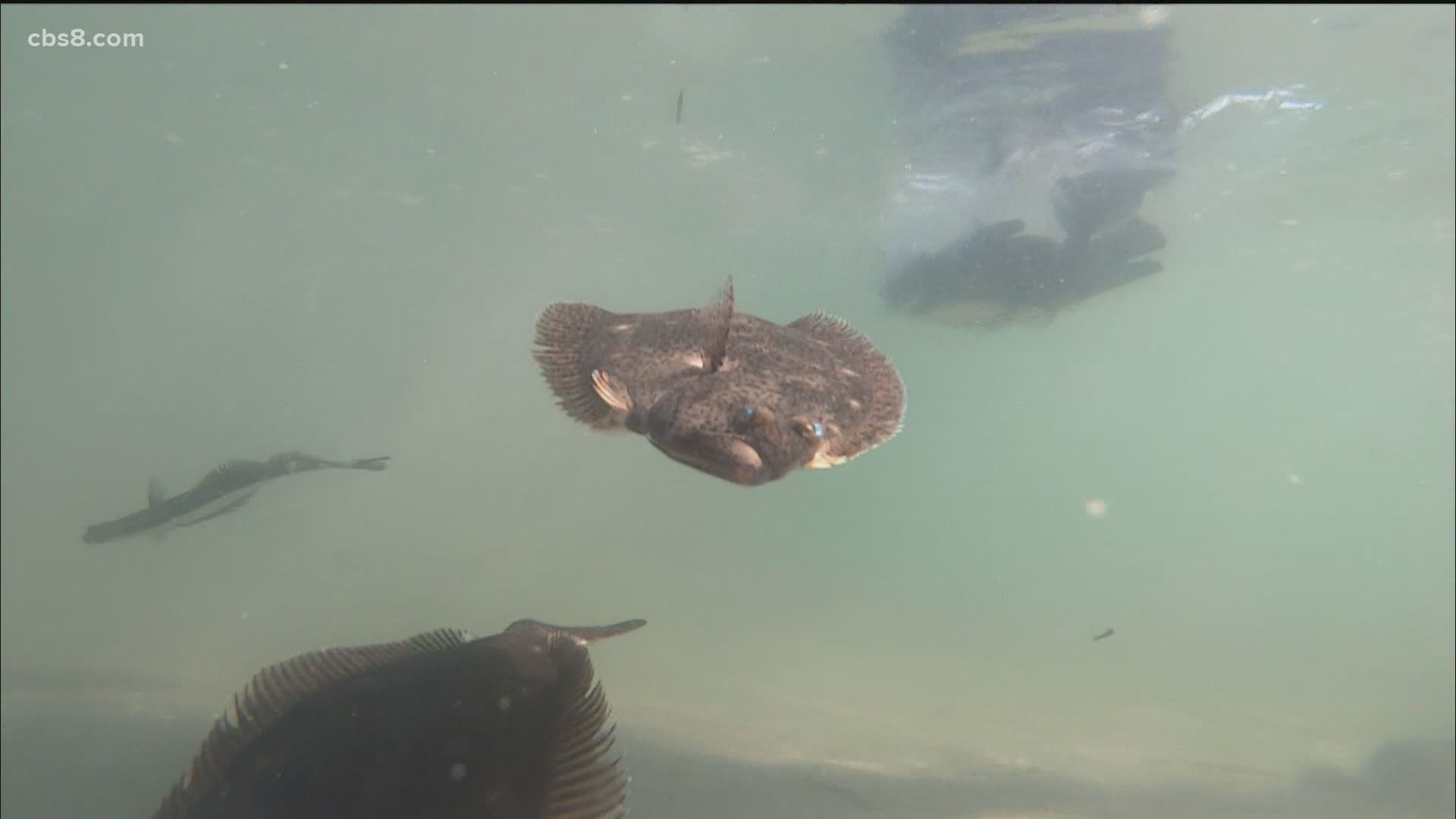SAN DIEGO — The Hubbs SeaWorld Research Institute released over 500 adolescent California Halibut in San Diego's Mission Bay as part of the Dick Laub Fisheries Replenishment program committed to getting the California Halibut back into the wild.
Mark Drawbridge is a senior research scientist at Hubbs and he and his team have raised the California Halibut from eggs.
"The fish come first, so we're going to get the fish in the water," Mark said. "We've got just over 20 California Halibut in the bag. They're 13 months old and 7-inches on average."
Over 500 will be released, and while the population is doing well north of Pt. Conception, it is not the same story in the south.
You might think that overfishing would be the main cause but it's another manmade problem.
"Stock enhancement, stock replenishment is one option that we can look at to bring those populations back," Mark said. "In California, we don't have nearly the nursery habitat we had 100 years ago. So what we can do here is by growing the fish to a larger size it mitigates that loss of habitat."
Helping with the release is Assemblymember Tasha Boerner Horvath from the 76th district and her daughter Maya.
"So, I think when we look at sustainable fisheries and our ocean habitat knowing we have sports fishing, knowing how important that industry is to California from the tourism side, being able to restore our oceans sustainable is super important," Tasha said.
The halibut released were raised from fish at Hubbs SeaWorld Research Institute.
"All the adult fish were caught by the Coastal Conservation Association of California, in particular the San Diego chapter," Mark said.
That means fish that would normally spawn here are returned to San Diego water nurseries.
When asked why the halibut are released into the bay instead of the ocean, Mark said, "Halibut this size, this is where they live. This is where they find food. This is where you'll find them. The juvenile will do better here. Their prey source is here and there are few predators here."
Private funding makes this all happen.
"Each step along the way is a success story. We're thrilled to be at this point here releasing fish," Mark said.
The juveniles released are at about 13-months-old and it will take about two and a half to three years before they're full-grown adults and that is the age that they will be out in the wild breeding and replenishing the stock in the waters off San Diego.

